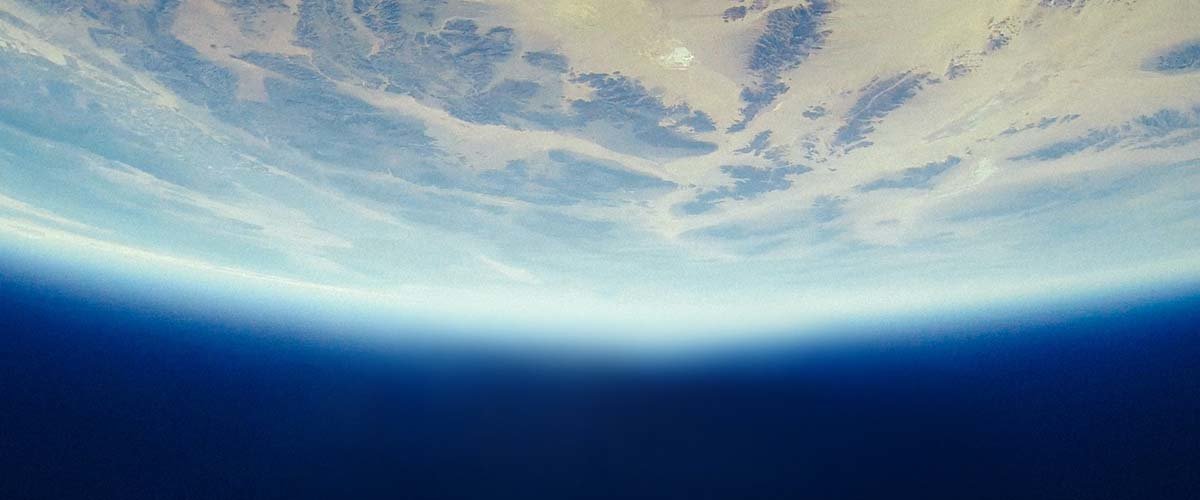
10 ways CFANS is driving sustainability with science

Farm fields, forests, freshwater and food — what’s the common denominator? All are impacted by the world’s changing climate. At the University of Minnesota College of Food, Agricultural and Natural Resource Sciences (CFANS) researchers are busy all year long using innovative science to advance climate change solutions across disciplines. Every day, CFANS students, faculty, and staff employ science to create a world that will feed a growing population while sustaining vital natural resources.
To celebrate Earth Day 2022, we’ve gathered 10 stories of CFANS climate solutions science work from lakes to laboratories — and everything in between.
1. As the planet warms, the world's lakes are losing oxygen
Freshwater ecosystems, and the fish that inhabit them, are particularly vulnerable to the effects of future climate change. CFANS assistant professor Gretchen Hansen, PhD, is using innovative techniques to track the quality of lakes to understand how climate change is impacting water clarity, ice cover, habitat and fish species populations.
2. Driving actionable climate science
Last fall, the U.S. Department of the Interior announced the Midwest Climate Adaptation Science Center (CASC), housed at the U of M. Three CFANS faculty members serve as leaders, working to provide science that helps managers of the country’s natural resources, including fish and wildlife, adapt to climate change.
3. What’s in a drought? Research challenges and opportunities
Negative effects of the 2021 growing season drought conditions, like stunted crop development and a lack of water running through drainage ditches, were easy to see in fields throughout Minnesota. At CFANS Research and Outreach Centers across the state, the drought’s impact was more varied — presenting both research challenges and opportunities.
4. The next generation of food ingredients
The Plant Protein Innovation Center (PPIC) was founded in 2018 to bring together researchers and industry experts to study and produce sustainable plant protein ingredients and products. “We’re listening to what the consumer is asking for and we’re listening to industry needs, and it’s all underpinned by what’s good for our environment,” said Pam Ismail, PhD, PPIC Founder/Director and professor in the Department of Food Science and Nutrition.
5. Climate eye in the sky
There's a tower in the Twin Cities that does more than radio broadcasts. It uses trace gas sensors to measure gasses such as carbon dioxide, nitrous oxide, ammonia and methane. Located just south of the metro area, the Tall Tower Trace Gas Observatory uses the same tower as Minnesota Public Radio. The tower has amassed 15 years of data about climate change across the U.S. corn belt.
6. Waste newly placed
Food waste is the largest category of municipal solid wastes in the U.S. In his publication, “What a Waste — Can We Improve Sustainability of Food Animal Production Systems by Recycling Food Waste Streams into Animal Feed in an Era of Health, Climate, and Economic Crises,” Jerry Shurson, PhD, professor of animal science, explores ways to build a more resilient, efficient, less wasteful kind of food system by upcycling nutrients from agro-industrial byproducts.
7. Crop input tool can help reduce pollutants
Reducing greenhouse gas emissions (GHGs) and nitrogen water pollution from agriculture are top environmental priorities in the U.S. Key to achieving climate goals is helping producers navigate carbon markets, while also helping the environment and improving farm income. A new tool developed by CFANS researchers allows farmers to create a budget balance sheet of any nitrogen reduction plans and see the economic and environmental cost, return and margins, all customized to fields under their management.
8. How earth and economy are inextricably linked
To navigate through sustainability crises, we need to understand how the economy affects the environment, and vice versa. A new "Earth-Economy" model developed in CFANS does this by combining a macroeconomic model with a high-resolution ecosystem service model, generating new insights on what policies are best for both the environment and the economy.
9. Fostering forests
Kelly Martichuski is a CFANS senior studying Sustainable Systems Management. She’s also an employee of Forest Carbon Works (FCW), a company focused on protecting forests and utilizing them to their full potential. At FCW, Martichuski's work includes training field technicians and working with clients to preserve their land and have a passive income source.
10. Making things stick with sustainable science
Steve Severtson, PhD, knows a thing or two about “sticky” situations. As a CFANS professor and scientist, he’s leading research in the area of industrial adhesives, focused on those partially or entirely made of materials derived from biomass (renewable organic material).





